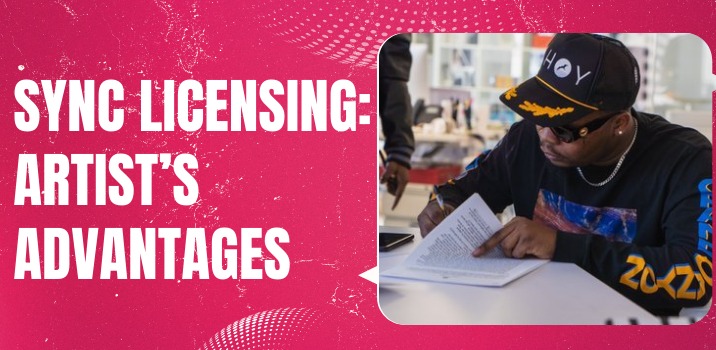What is sync licensing and how it is good for an artist's career?

25-April-2024
Syncing, often known as synchronization, is the blend of music with moving pictures from movies, TV shows, commercials, video games, trailers, etc. Sync license is an agreement between a music publisher with a potential client, a film producer or a music supervisor. Sync license is crucial for the career growth of artists. In this blog, let us examine what sync licensing is and why it is essential to artists:
What is Sync Licensing?
Sync licensing, short for synchronization licensing, involves the inclusion of music with visual content. It can range from a catchy tune accompanying a television commercial to an emotional track enhancing a pivotal scene in a blockbuster movie. These agreements are negotiated between music publishers and clients such as film producers, music supervisors, and advertising agencies.
Importance of Sync Licensing
Exposure to New Audiences
Sync license exposes artists to diverse audiences they might not reach through traditional channels. With their music featured in popular media, artists can attract new fans who resonate with their sound, thus expanding their fan base and increasing their visibility.
Revenue Generation
Beyond the upfront licensing fee, a sync license offers artists a steady income through royalties. Every time their music is streamed in a synced placement, artists are entitled to receive royalties, providing a reliable source of revenue that complements other income streams such as streaming and live performances.
Enhances Brand Identity
Music has the power to evoke emotions and create memorable experiences. When a song is synced with visual content, it can leave a lasting impression on the audience, associating the artist's music with the brand or narrative portrayed in the media. This association can strengthen the artist's brand identity and contribute to their overall image and recognition.
Networking and Collaboration
Sync licensing opens doors for artists to collaborate with industry professionals such as music supervisors, producers, and directors. Building relationships with these players increases the likelihood of future sync placements and opens opportunities for other creative collaborations within the entertainment industry.
Long-Term Revenue
Unlike one-time music sales or downloads, sync licensing offers the potential for long-term revenue streams. Once a song is synced with visual media, it can continue to generate royalties for years to come through reruns, syndication, and international distribution, providing artists with a passive income source that contributes to their financial stability.
Conclusion
In today's competitive music landscape, sync license has emerged as a powerful tool for artists to expand their reach, generate revenue, and enhance their brand identity. By leveraging the opportunities presented by sync licensing, artists can connect with new audiences, forge valuable industry connections, and establish a sustainable career path in the ever-evolving music and media. As the demand for quality music in visual content continues to grow, sync licensing remains an essential strategy for artists striving to thrive in the digital age.